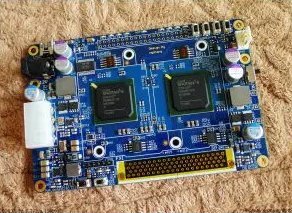Mining is the process in a decentralized blockchain network in which certain participants (so-called "miners") process, store and secure verified transactions within this network. As it is essential for the rest of this article to understand - at least roughly - what mining actually is, you should first read this article before reading any further.
Since all participants in a blockchain-based network must agree on a certain state of the decentralized database and a transaction sequence must be defined, mechanisms are needed to prevent potential attackers from cheating. With the "proof-of-work", a scheme was introduced for the first time that served to create resistance to fraud by requiring the expenditure of two non-falsifiable resources, namely energy and time.
If you want to mine profitably these days, you need a lot of computing power. However, this was not always the case. Since, as explained in the article "What is mining", the computing power required is always based on the overall network, significantly less was needed in the early years.
This computing power (also known as hashrate) describes the number of hashes a computer can calculate per second. For this example, it is sufficient to know that a calculated hash is virtually equivalent to one attempt to find a valid block.
Over time, a wide variety of hardware was preferred in order to calculate as many of these hashes as possible in the shortest possible time. To understand what an ASIC miner is, we need to take a short journey through the past. Basically, the whole thing can be divided into four acts, similar to a play.
Especially in the early days, early participants in the Bitcoin network were able to mine via their CPUs (Central Processing Unit) in their computers. This chip is the central processing unit and tells all parts of a PC what to do. Nowadays, most systems have so-called multi-core CPUs, which are much more powerful. However, these are no longer suitable for mining.
Over time, the number of participants involved in mining has increased. This in turn increased the total computing power in the network.
Here you can see the logarithmic development of the hash rate. This illustration allows you to follow the development of the hash rate in the early days of Bitcoin in particular, as small values are assigned a higher weighting.

With the advent of GPU miners (= mining with the chip on the graphics card), CPUs became superfluous. GPUs(Graphic Processing Units) are - as the name suggests - primarily designed for video processing. This work is a constant cascade of repetition, as large groups of pixels must always do the same thing on the screen.
Imagine that CPUs and GPUs represent two groups of people. In this case, a CPU would be a very small group of smart people who can quickly complete any task they are given. GPUs would instead be an immensely large group of dumb people who are neither smart nor fast to begin with. However, they can be trained to do repeatable tasks, making them much more productive than the CPU group by sheer numbers alone.
GPUs also have a larger number of ALUs (Arithmetic Logic Units) than CPUs. This allows them to perform larger amounts of bulky mathematical work.
A GPU groups its ALUs. In a group of ALUs, the administration is divided. This means that two ALUs in a group cannot perform the same task. Instead, they will work on an almost identical variation of the individual tasks that synchronize perfectly with each other. For example, trying out different hashes.
Even today, many smaller projects still mine with GPUs. For example with Monero.

FPGAs(programmable logic gates) are integrated circuits that are designed for a specific task. They can be configured on site or reprogrammed at any time depending on the task. An FPGA can be a microprocessor, an encryption unit, a graphics card or even a miner.
An FPGA is made up of thousands of logic blocks (CLBs). In IT Chinese: These CLBs consist of look-up tables (LUTs), multiplexers and flip-flops.

The first ASIC miners(Application Specific Integrated Circuit) were first produced in 2013. This hardware consists of special microchips that were only developed for mining. ASICs perform one task particularly efficiently but are practically useless for any other tasks.
Did you know: An ASIC miner from 2018 that costs $2,500 can replace 400 GPUs or 12,000 CPUs.
Unlike FPGA miners, ASICs are a permanent circuit. This means that an application-specific circuit is glued into silicon and cannot be changed again. This means that ASICs can be produced more cost-effectively in large quantities. As the power consumption of ASICs can be controlled and further optimized, they are also more energy efficient.
The best-known companies for ASICs are Bitmain with its Antminer series and Ebang with the EBIT series.

The first ASICS were so-called USB miners, such as the Block Erupter and the Antminer U2+. These were particularly energy-efficient and could calculate around 300 megahashes (=300 million hashes) per second.
With the advent of ASICs, the difficulty of solving a block is enormous. As a result, private individuals can no longer mine profitably with GPUs and CPUs. Companies that have access to low-cost electricity and thermally regulated data centers benefit from this in particular. In addition, mining is centralized in a few pools, which can come dangerously close to the critical 51% total computing power due to the high computing power.